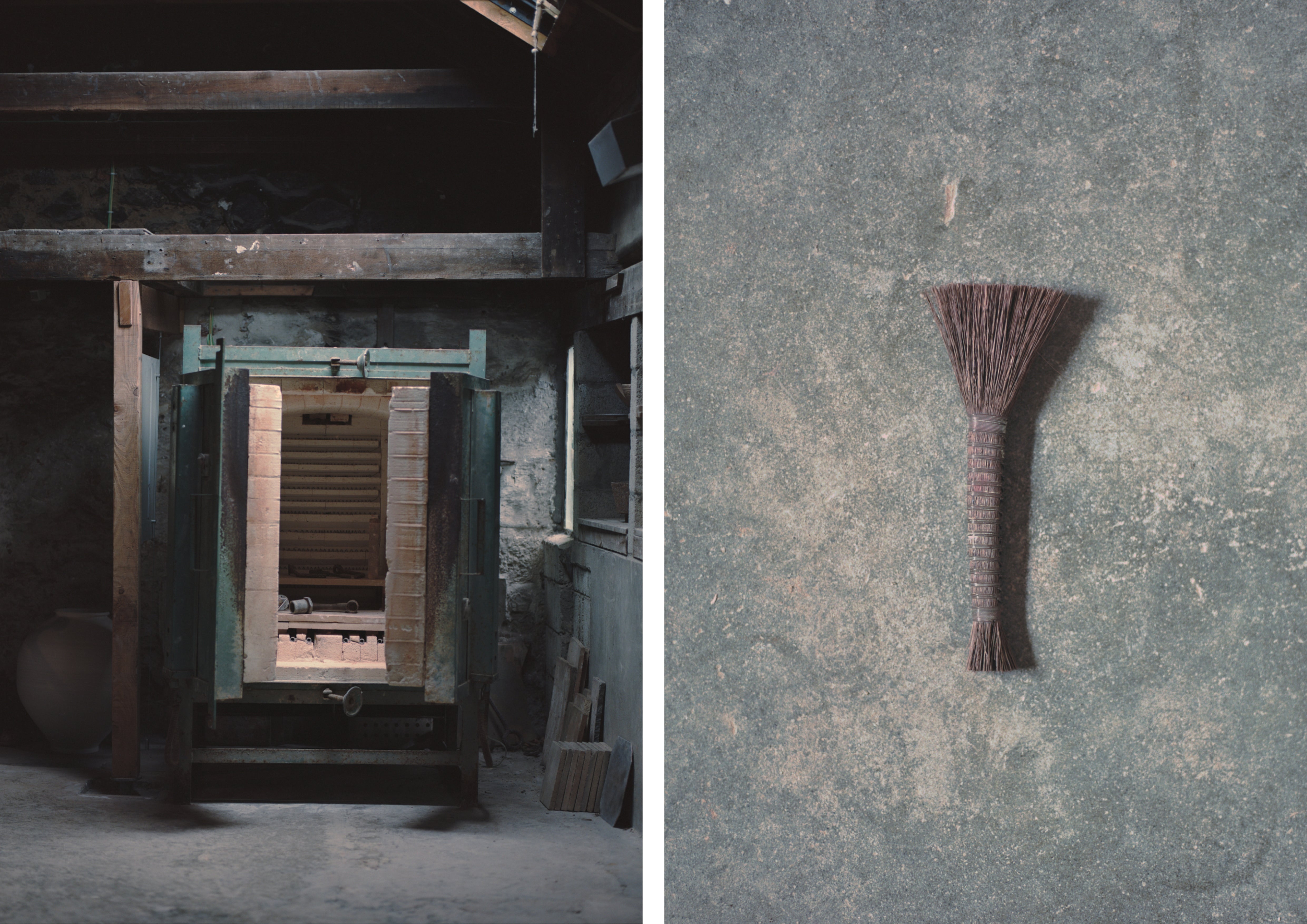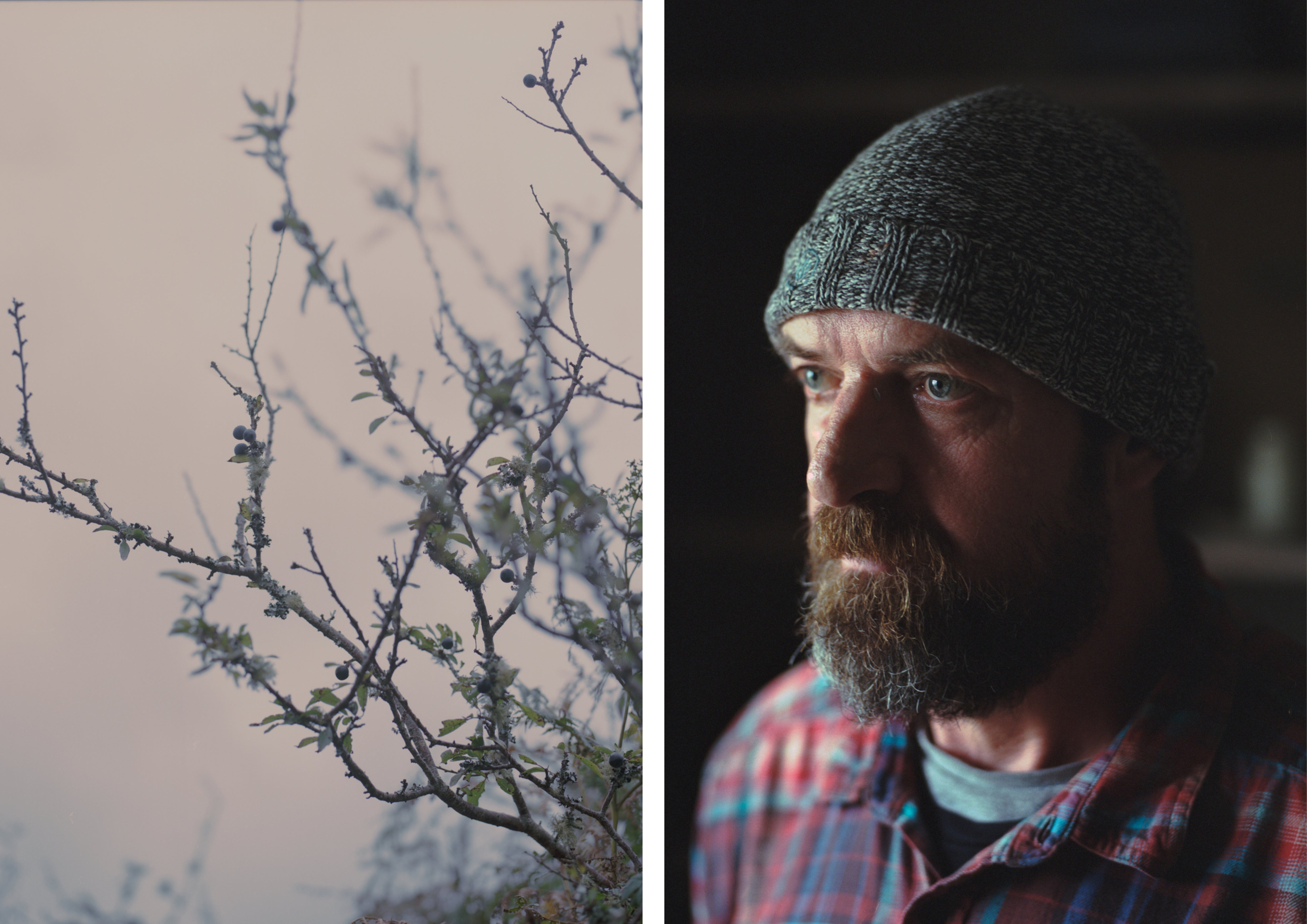
“You have to throw about 600 of these until you can make them properly, says Roelof Uys,” lead potter at The Leach Pottery in St Ives, which sits on a hill just as the town starts to peter out into the rugged Penwith Moors. He's talking about an egg cup a chunky little stoneware pot just shy of five-centimetres in height, with an earthy green glaze covering most of it and an unglazed, biscuit-brown bottom. “Everyone who comes here to make pots has to start their throwing training with these,” he explains. “They're fiddly and difficult, but once you've mastered them, it's easy to learn other shapes.”
Roelof joined the pottery in 2013, today heading up a studio of six potters, as well as an apprentice and a merry band of volunteers. The egg cup is one of the pieces that Roelof introduced soon after he'd joined the pottery, but he's quick to point out that this isn't about him. “The Leach Pottery doesn't belong to us,” he says. “It belongs to the generations of potters who have come through here before us and been taught by Bernard Leach and his apprentices.”
Over the last few hundred years, there are few potteries that have been quite as influential as The Leach Pottery. Widely regarded as the birthplace of British studio pottery, its founder Bernard Leach represented a new breed of artist-potter in the twentieth century, establishing an aesthetic tradition characterised by hand-thrown, functional pots, glazed in quiet earthy colours. His work was a reaction to mass-produced ceramics what he referred to disparagingly as a commercial scientific graveyard' and it was an aesthetic that put modesty and simplicity at the fore.


Born in Hong Kong in 1887, Leach studied art in England, before moving to Japan in 1909. While he intended to make a living by teaching etching, he found himself "enthralled" by pottery in 1911 after participating in a Raku party, in which pots are fired at low temperatures and then allowed to rapidly cool, resulting in intriguing surface crackles. He went on to hone his pottery skills with Japanese masters, before returning to England in 1920 to set up the Leach Pottery with his friend, the Japanese potter, Shoji Hamada. Together, the pair built a Japanese wood-burning climbing kiln the first in the West, which can still be seen in the pottery's museum today and Leach set to work creating pieces informed by his time in the Far East. Glazes were oriental, but they were combined with forms that felt distinctly English.
In the 1920s, many pieces were stand-alone, but by the 1940s Leach had developed a range of Standard Ware tableware, so-called not just because it was produced in large quantities at a low price point, but also because it provided standardised shapes and sizes. While he did throw and decorate pots, Leach saw himself as a composer-conductor, overseeing an orchestra made up of a few local lads, many of whom went onto be successful potters in their own right and a moveable feast of visiting students from across the world. The latter, very much upholding the founding spirit of the pottery, ensured there was a constant interchange of Western and Eastern ideas.
Having celebrated its 100th anniversary in 2020, The Leach Pottery continues to welcome potters and art students from across the world in what Roelof describes as a great melting pot for ideas. While Leach established a fairly rigid framework of how to make pots especially through his 1940 A Potter's Book, a seminal work that functioned as a kind of rule book Roelof is quick to point out that experiments are encouraged at the pottery today. “This is very much a place where good and bad ideas are tested the good ones grow and the bad ones go in the bin, but we're learning together,” he explains. Of course, there is a certain amount of control required too. For apprentices of which there tends to be just one a year this involves getting a good grasp of the basics, including preparing clay, mixing glazes, loading kilns and waxing the bottom of pots. “There are a lot of jobs that are quite mundane, but every job here is important,” Roelof says. Crucially, he shares Leach's belief that pots should be about pleasure: “good design for me is all about the person making it enjoying it and the person using it enjoying it,” he explains.


Just like Leach almost 80 years before, South-African-born Roelof discovered pottery through Raku when he was studying at technical college there. “I hated ceramics at first, but then we did a raku firing one day and it really captured my imagination,” he explains. After finishing at school, he set up a small studio at his parents house, selling mugs to earn a living', before moving to an artist commune in Johannesburg. Eventually, he came across the work of a group of South African potters who had trained under Leach apprentices and was intrigued. “It was free and easy and not at all overworked,” Roelof says of their pieces. “I just couldn't understand how such a standard was attainable.”
Roelof left South Africa in 1997, moving to London and then finally down to Cornwall in 1999. He secured a spot at Gaolyard Studios, a shared studio space run by Leach apprentice John Bedding. Roelof spent 14 years honing his craft there before moving to The Leach Pottery. He soon developed a new 17-piece collection of Standard Ware, of which the egg cup is one. While he looked to Leach's early examples of Standard Ware for inspiration, his designs are based on the realities of contemporary life. “We don't really need soup jugs anymore since we have central heating, so I focussed on mixing bowls, jugs, plates and mugs,” he says of the collection, some of which has recently been acquired by the Victoria & Albert Museum.


Today, the clay used is a mix of fire clay from nearby St. Agnes and ball clay which provides plasticity from Somerset. The palette of glazes has remained relatively unchanged since Leach's day a creamy Dolomite, an earthy grey-green ash, a rich black tenmoku and an orange, feldspar-rich shino. Firings take place at least once, if not twice a week, in natural gas kilns an affordable, and cleaner, alternative to the wood and oil-fired kilns that were used in Leach's day. Standard Ware is made by the whole team, not only generating an income for the pottery and museum, but also allowing potters to perfect their skills. “What you get out of this sort of repetitive potting is a level of competency and a real control over the clay,” says Roelof, who encourages the potters to pursue their own practice out of hours.
“When I started at Leach, I didn't want to lose my identity and had to really resist just copying Leach pots,” says Roelof. “Only seven years later am I now starting to feel confident in the work I'm doing.” This has included a trio of prepping bowls and a sourdough jar, which have been exclusively designed for TOAST. “I took my inspiration from a General Purpose bowl that was made during the 1940s,” Roelof explains. “It really stood out to me as an object of beauty.” Unlike Leach, who meticulously sketched out designs, Roelof prefers to explore form through the act of throwing. “The best way to test if something is viable is just to make it,” he says. “I sometimes feel guilty about not sketching, but I'm an artist who works with clay and makes pots people use everyday. That is my art.”

The Leach Pottery Mixing Bowls and Sourdough Jar have been created exclusively for TOAST.
Words by Elizabeth Metcalfe.
Photography by James Bannister.
Add a comment
1 comment